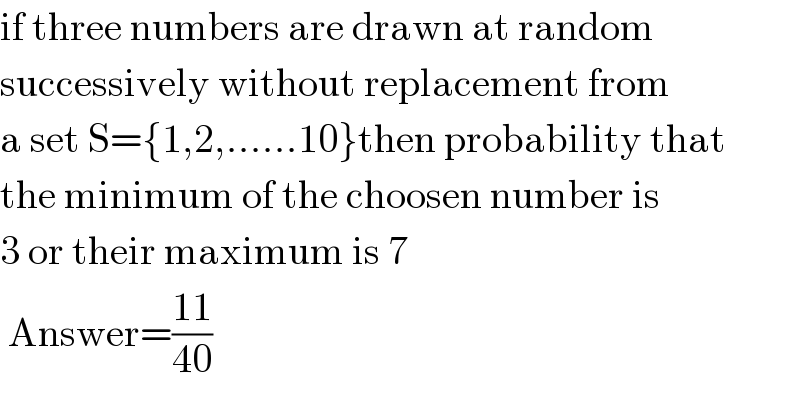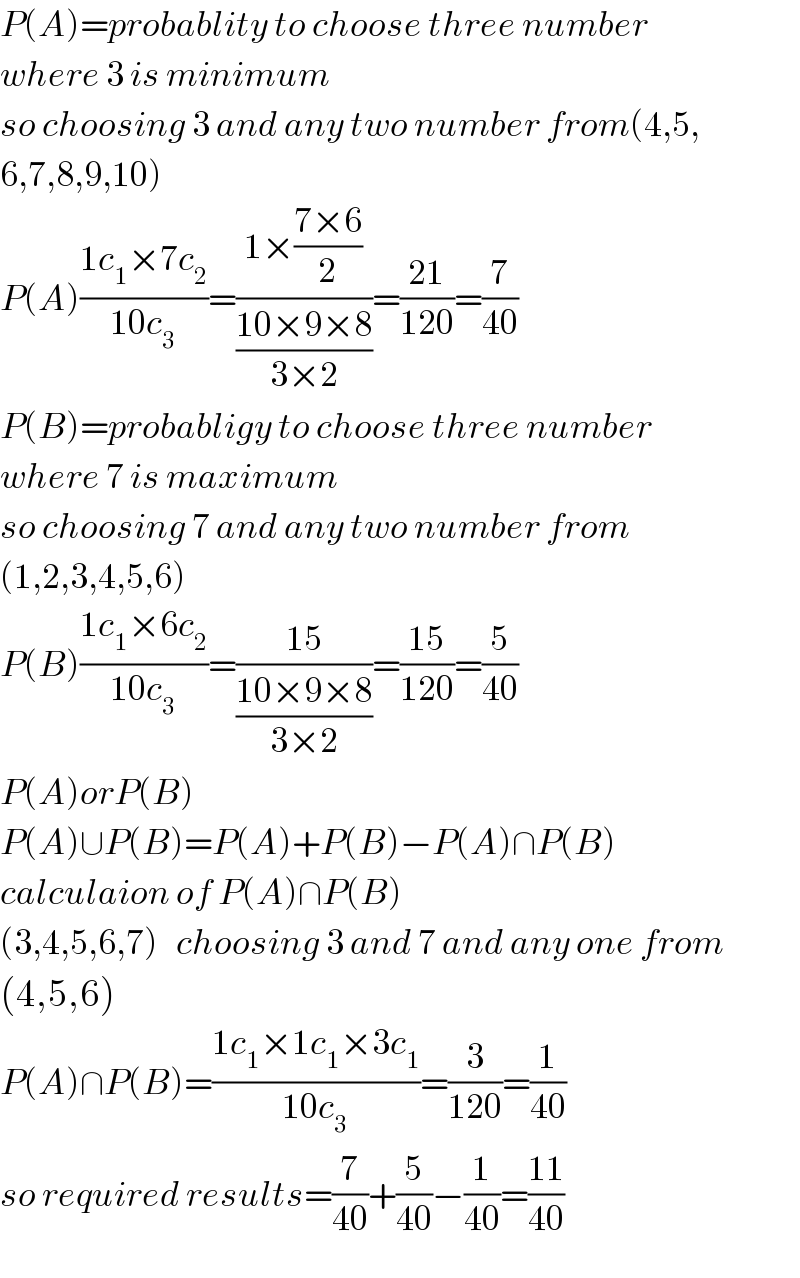
Question and Answers Forum
Previous in Permutation and Combination Next in Permutation and Combination
Question Number 40550 by vajpaithegrate@gmail.com last updated on 24/Jul/18

Answered by tanmay.chaudhury50@gmail.com last updated on 24/Jul/18

Commented by vajpaithegrate@gmail.com last updated on 25/Jul/18

